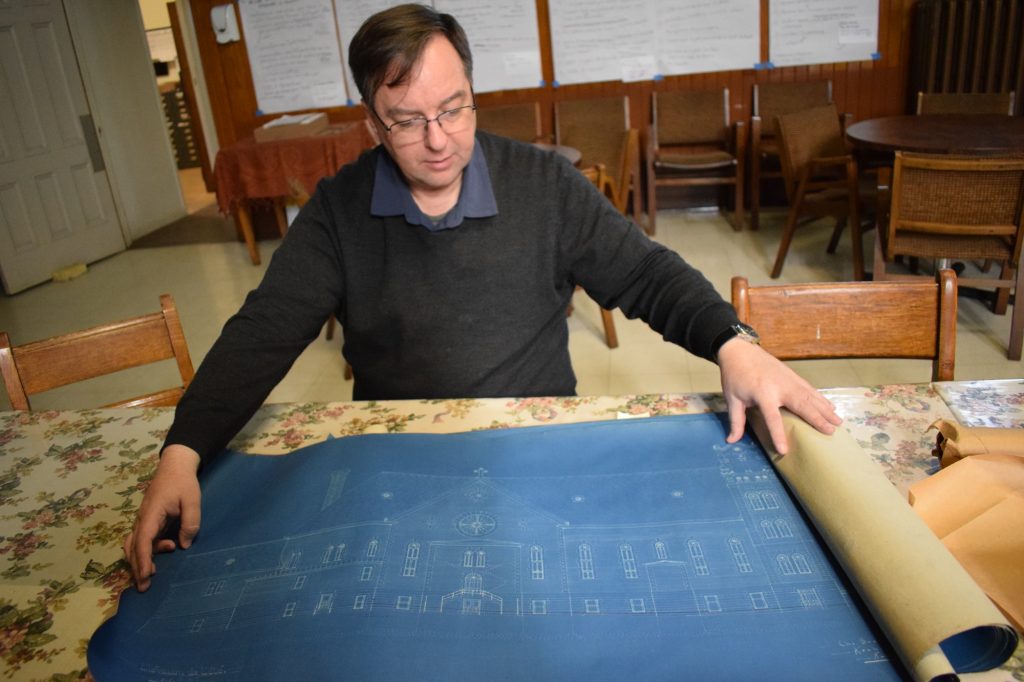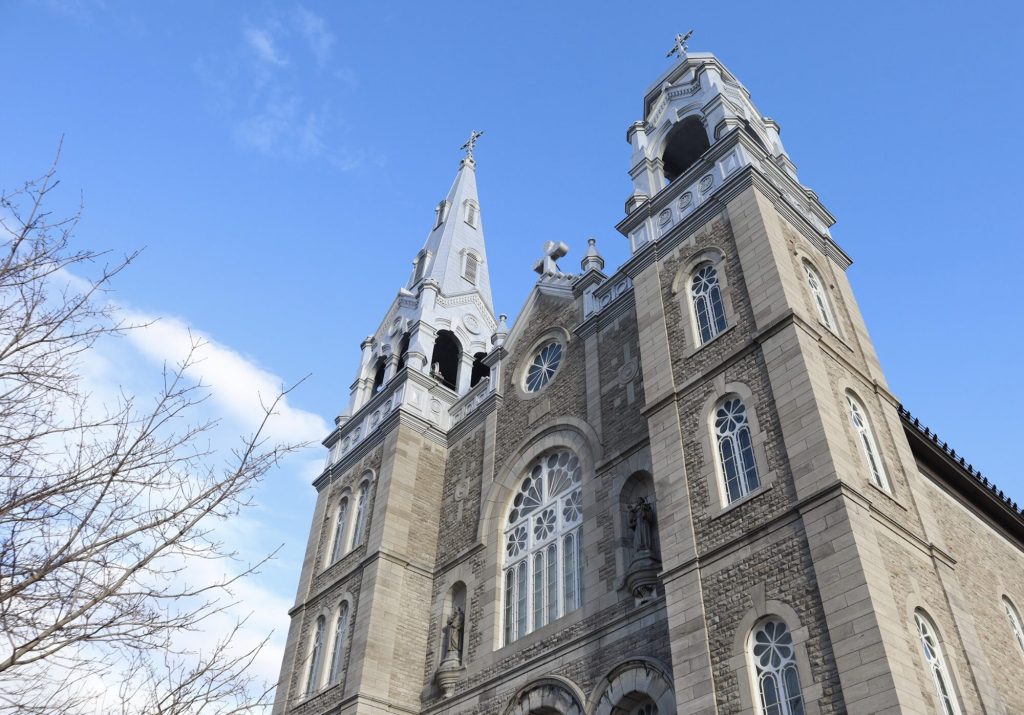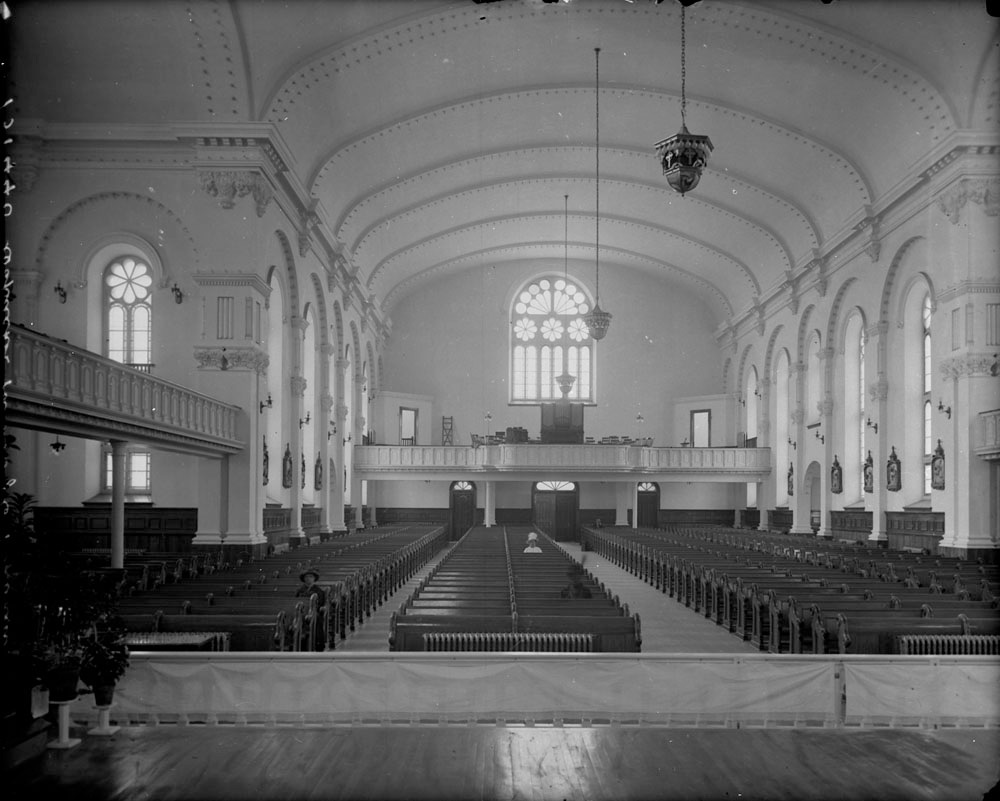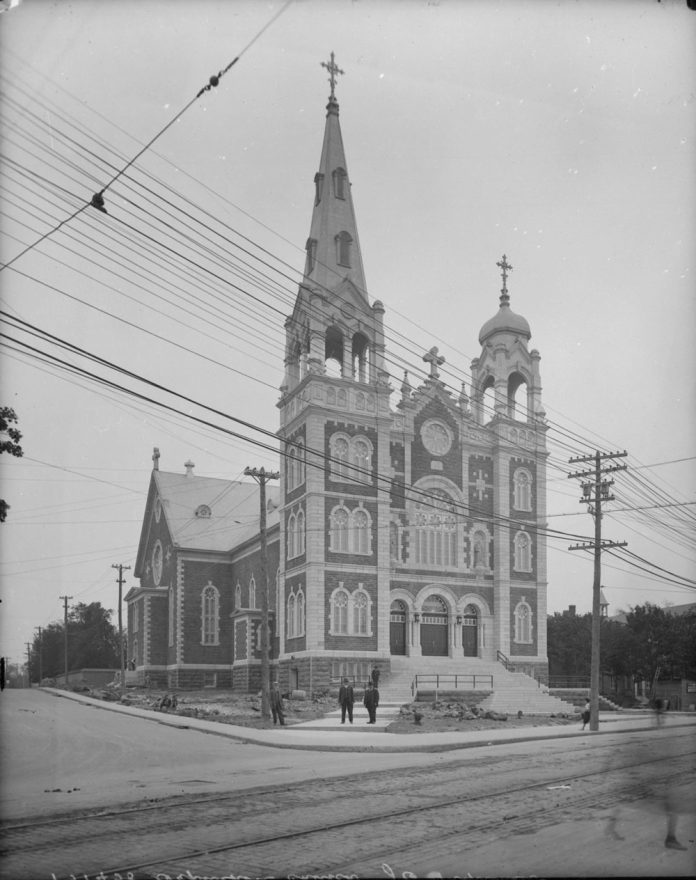By Mat Dicsi
When walking up to St. François d’Assise Church, only one word comes to mind – big. From the massive three-door entrance to the giant asymmetrical bell towers at each side, it’s easy to be awestruck by its scale.
Stepping into the place of worship, you’re greeted by dozens of pews lining the length of the church. Windows let in beams of light with a cool blue tint, giving the whole nave an atmospheric hue fit for worship.
“When they built the great cathedrals, they had in mind that the church [would] be visible,” said Gilles Leclerc, organist of St. François d’Assise since 1977.
In 1890, two Capuchin brothers came to Ottawa from France in hopes of setting up a monastery. When talking with Joseph-Thomas Duhamel, archbishop at the time, they were given permission to set up their monastery — with one condition.
“The deal was that if he accepted them, they had to set up a new parish,” said Leclerc. “The archbishop said, ‘I’ll give you a territory and it will be a segment of St. John Baptist parish.’”
They built a monastery where the Hintonburg Community Association now stands in winter 1891 with the original church attached. It served parishioners until 1915 when the current St. François d’Assise opened.
Fascinating plans
But beauty doesn’t come from sheer scale alone. For a few years Leclerc was fascinated by the original plans, hand-drawn by architect Charles Brodeur. While surveying them, he found a unique mystery.
“I was struck by the strange height of the ceiling of the vault. It’s 53 feet high and it sounds like a funny number,” said Leclerc. “Then I started noticing the proportions which relate to the golden ratio.”

The golden ratio is the relation between the variables in the Fibonacci sequence. When you divide the bigger number by the smaller number, the answer will come close to 1.618 also known as Phi. The larger the numbers, the closer it will be.
The Fibonacci sequence refers to a historic equation. By using this sequence with different variables, people have made some of the greatest pieces of art like the Mona Lisa or built historic structures like the pyramids.
“The entire church is, generally speaking, in a golden ratio,” said Leclerc. “That’s the reason why it looks so great. It provides these great proportions that have it sitting really elegantly and majestically like the Greek temples. It really is the jewel of Hintonburg.”
St. François d’Assise’s organ was originally built in 1886 for Knox Presbyterian Church, said Leclerc. It was expropriated in 1929 to make way for Confederation square where the national war monument now stands. The keyboard instrument was abandoned until 1933 when the Wellington West Church took it in. In 1961 it was decommissioned due to a lack of funds for repairs before being unearthed and refurbished in 1988.

While the church is a place for worship, over 30 organizations have also used it as a concert venue. Leclerc called it “one of the best music venues in the city.”
Though large and gorgeous, the church has seen better days. Due to changing generations, the parish has had the Korean Martyrs Church share the building and a private Catholic school rents space in the basement.
“We do have challenges ahead,” said Leclerc. “Obviously, church attendance isn’t what it used to be. Now we are kind of thinking, ‘Where do we go from here, how do we maintain such a grand building?’”
The upkeep of grand, century-old buildings costs lots of money. A fundraising campaign is being launched this year to help raise funds so the church can remain in the community for decades to come.
“If we let go of everything we have in our generation, what will we give to the next generation?” said Leclerc.

